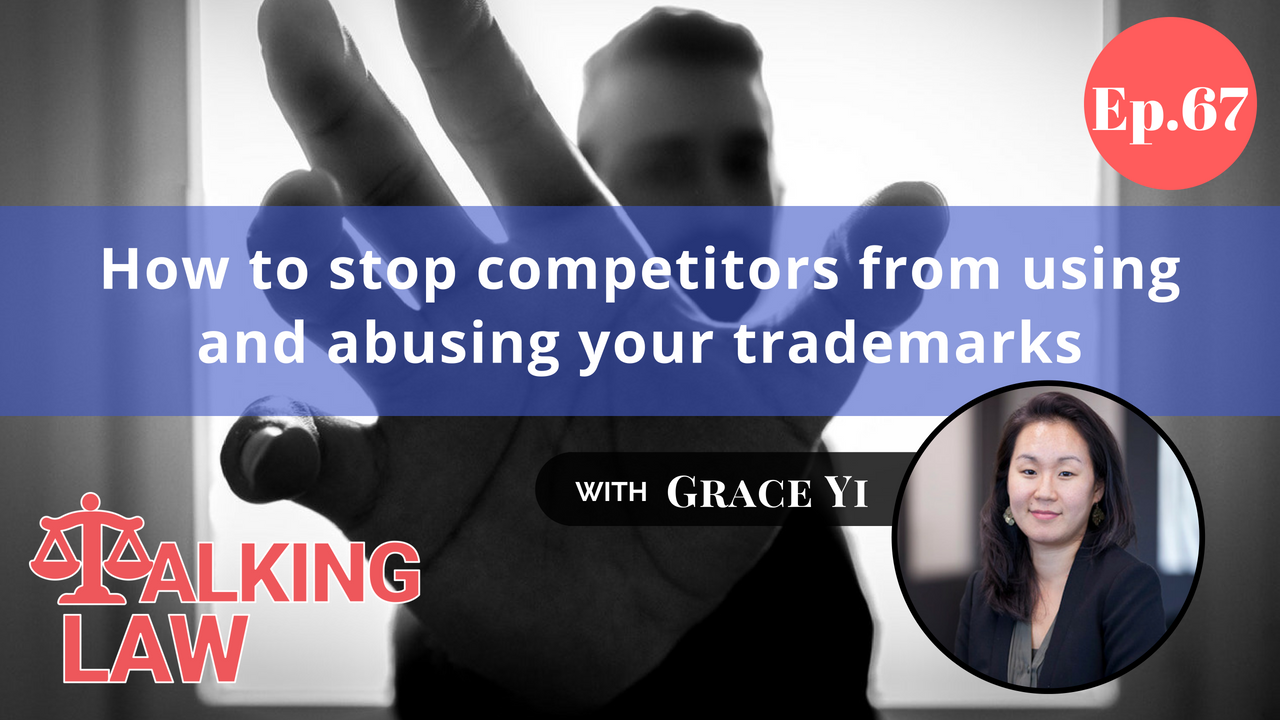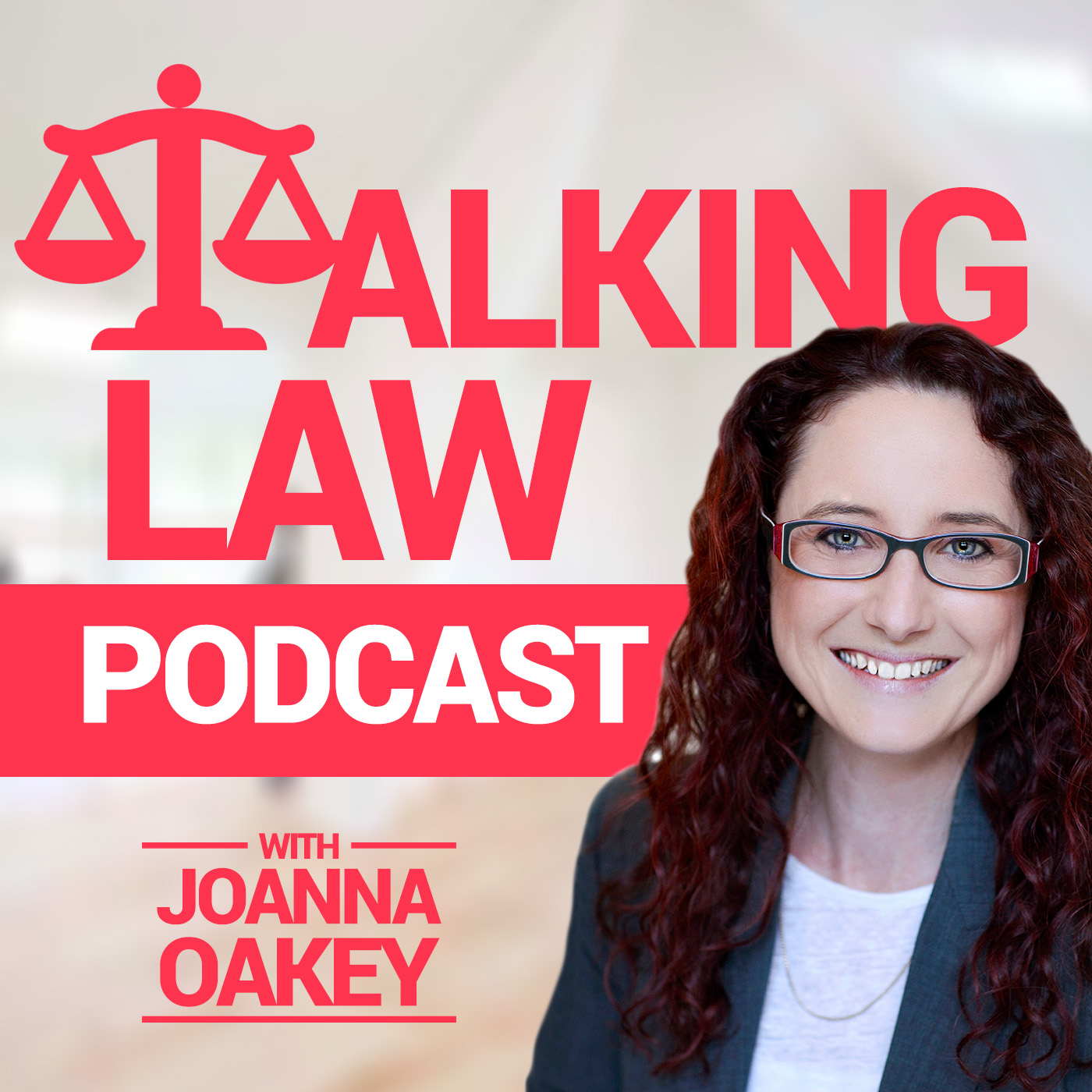
Trademark infringement is where a competitor in the marketplace is using or misusing your trademarks in the marketplace in relation to the same sorts of goods and services that you provide. Pursuing infringers is actually quite simple but there’s a lot of things you can do wrong if you don’t know what the process is. So in this episode, we’ll run you through our list of top tips to stop competitors from using and abusing your trademarks.

Episode Highlights:
- Be proactive about enforcing your trademark rights
- What is a trademark and trademark infringement?
- If you don’t do anything, you might lose your rights
- Don’t do it yourself, seek legal assistance
- Here’s what you need to do
Joanna: Hi, it’s Joanna Oakey here and welcome back to Talking Law, a podcast brought to you by our commercial legal practice Aspect Legal. Now today we are back to the topic of trademarks and brand protection because it’s such a popular topic with our audience. So today we are specifically talking about how to stop competitors from using and abusing your brand and in order to talk about this topic. We have of course brought back our resident trademark expert Grace Yi to give us the specialist perspective on this topic.
Joanna: Hi Grace, welcome back!
Grace: Hi Joanna. Thanks for having me again.
Joanna: Thank you for coming along. Okay Grace let’s start from the very beginning. Why are we talking about this topic?
Grace: Yeah.
Be proactive about enforcing your trademark rights
Grace: Trademark infringement is a really important area to talk about and we’ll talk about it a lot I think on this podcast over other episodes. But it’s a really important area because you’ve spent all your time and energy in building up the reputation and your brand and you don’t want to have a situation where someone else is copying your brand and potentially causing confusion in the marketplace.
Joanna: Absolutely. And I think that’s really critical because whilst we do a lot of work here at Aspect Legal in brand protection, we also do a lot of work in enforcement actions. And we see how much of an issue it can cause a business where competitors are using or misusing their brands whether or not that’s their business name, company name, or brand names of certain product lines or whatever that they have. And we also see the risks for businesses in not acting to take steps to stop this activity soon enough.
Grace: Yeah that’s right. So it might not be commonly understood that no one actually, no one else is going to sit there and enforce your trademark rights. It’s actually something that a business owner has to be quite proactive about. It’s not something that ASIC necessarily are going to prevent and it’s not something that IP Australia are going to necessarily always be able to prevent either. They are gateways to a certain extent. But at the end of the day, it’s up to the individual business to be on top of other competitors in the marketplace that might be infringing on your trademark rights.
Joanna: Absolutely. When we’re talking about ASIC here, I guess we should spell out that what we’re talking about is the ability of businesses to register a business name or company name that includes your business’s trademark. Because the reality is that even though you have a business name or company name protection, that may not and in most instances isn’t enough to stop other people from registering variations of that as a business or company name. And of course if you have a brand name, once again there’s nothing to stop people from registering that brand name as a business name or company name other than the trademark rights that you hold in relation to it and the action that you take to enforce those rights.
Grace: That’s right.
What is a trademark and trademark infringement?
Joanna: How about we start off then by talking very briefly about what our trademark is. Now if you follow these podcasts quite closely, you probably have heard Grace and I talk about what a trademark is in the past. So we’ll just give a really quick synopsis. But I think it’s important to understand what the trademark is in order for us to understand what trademark infringement looks like. So very quickly Grace, what’s a trademark?
Grace: A trademark is a symbol or a sign and it can quite often be a word but it can also be a logo, an image, a sound, a smell, a color, an aspect of packaging. So lots of different things can function as a trademark but essentially they distinguish your goods and services from those of everybody else in the marketplace.
Joanna: Yeah absolutely and so here in relation to Aspect Legal we have the words themselves Aspect Legal are a word mark so a type of trademark relating to the words. But we use a hexagon as part of our branding so the hexagon is our logo component of our trademark.
If, as you were listening to this podcast, perhaps you might want to think about the elements of trademarks in your organization which might be the logos, the words, a combination of the two or even taglines. Taglines sometimes can function as a trademark in certain circumstances.
So what is trademark infringement? Trademark infringement is where a competitor in the marketplace is using your trademarks so your logo, your wording, your tagline, or combinations thereof in the marketplace in relation to the same sorts of goods and services that you provide. So that’s what trademark infringement is. Maybe let’s talk then about what we have seen that people often do wrong in this area when they’re dealing with the area of infringement.
If you don’t do anything, you might lose your rights
Grace: Yeah, that’s a really important thing to talk about. We’ve quite often seen clients who have tweaked on to the fact that there’s somebody out there who is potentially copying their trademark or using something that’s a bit confusingly similar. They might be in a situation where a client has actually seen them or they’ve seen something on the Internet and the first wrong thing that we see quite often is that they actually just do nothing about it.
Joanna: Yeah, absolutely. Or come to us years later and say look these guys have been around in the market for a long time but we’ve just now realized that potentially it’s an issue and it’s a problem. Why is it a problem?
Grace: Yeah. There’s a problem there because there is case law that shows that when it’s known to the court that a party has known about an infringement for quite a number of years and they’ve actually not done anything about it, the courts counted it against them when it comes to pursuing them for infringement later on.
Joanna: Yeah. So effectively, if you’re aware of a party misusing your brand out in the marketplace and you don’t take action to enforce it, you may lose your rights to take that action to enforce it if you’re leaving for too long. So I guess that’s the first issue and we call that in some sense acquiescence. You’ve effectively been aware of the infringement, not picked up on the infringement and allowed the other party to keep trading so therefore the court sometimes take the view that it would be unfair to in the future give you the right to now take action if you’ve sat there quietly allowing someone to continue to act in a certain way.
Grace: That’s right.
Joanna: So we’ve got an issue here if people do nothing because they might create the environment where they then in the future don’t have the right to take any action if they decide in the future that actually it is problematic more problematic than they originally thought but I guess there’s some other issues of doing nothing and just allowing the infringement to occur.
Grace: Another issue that we see is when a party has allowed lots of other traders to get on actually on to the trademark register and register for themselves trademarks that contain elements of their brand. And that’s a huge problem because it causes a dilution of the trademark rights that a client has in their brand.
Joanna: Yeah. So this is part of the whole do nothing element, right? You notice that someone is using misusing your brand or one of your brands. You decide to do nothing. Now this other party starts registering trademarks that relate to it and you’ve now lost monopoly rights. A court may not enforce any rights for you and worse still they’ve now got a protection in the marketplace that they might decide to go and enforce against others, but at the same time diluting the value to you of holding that ownership. What other issues Grace do you regularly see when we deal with clients in this space who have identified issues out in the marketplace with people misusing the brand?
Don’t do it yourself, seek legal assistance
Grace: Yeah. So an issue that we sometimes see is that clients have taken the step of approaching the infringer directly themselves first before coming to us and I mean this issue of infringement is quite a complex area so it’s definitely not an area where we can recommend a do it yourself approach at all. And there are multifold issues with this approach and one of them that we see is that they haven’t really got an understanding of what trademark infringement involves so there are risks there that they might actually be the infringer themselves.
Joanna: Yeah. We’ve certainly seen issues in the past with businesses who have thought that another party is infringing their mark and then taking steps to contact them and then find out actually you know what they’re in risk of infringement action themselves. So you’ve got to be very careful if you’re taking any steps to make contact with an infringer yourself to ensure you understand what you’re doing and you understand whether or not there’s any risk that you might be the party that would be considered to be infringing, not the other party.
I think there’s further elements here. It’s just about well who is the real infringer, of course that’s a very important question, but it’s not just about that. Even if you know that you are the absolute original holder of those rights, sometimes I find when people make advances or commence discussions themselves they make admissions, they make concessions, they hand away their rights unwittingly because they don’t realise what they are doing in discussions with another party.
It can be really hard for us when we’re brought in after the fact and we suddenly see this discussion that has been had between our now client and the other party and we see that we’ve basically waived many of our rights, which has tied our hands quite often as lawyers so that’s a real problem if people are taking action without completely understanding what they’re doing.
I guess the other thing Grace that I think we see is that the whole timing of making contact with an infringer is really critical because organizations have to be very careful about putting another party on notice, so an infringer on notice, before they’ve gotten their house in order. What’s some of the issues that you’ve seen around this point Grace?
Grace: What actually might happen is that it’s been a long time since an organization has gotten their trademarks registered. So that’s a good thing in that you’ve got some very early priority dates perhaps with your trademark registrations. But if you’ve not turned your mind to it, it could be the case that the actual trademarks that you’re using now don’t line up with what you’ve got registered or that the types of services or goods that you’re providing now might be beyond the scope of what you had originally registered. So it’s really important to do a trademark audit should we say before approaching anybody in terms of trademark infringement.
Joanna: Yeah absolutely because quite often what we see is when we have a look at the trademark registrations and this is assuming that there is a trademark registration on file. The reality is if you don’t have trademark registration behind you before you start making these advances, you’re opening the door to a lot of risk of that other party, the infringer, getting in on the trademarks register first. So that’s the first thing. We need to make sure that there’s a trademark registration.
But number two, as Grace is saying, we need to make sure that the trademark registration is sufficient because many times we’ve seen you know either old trademarks that aren’t reflective of the use in the marketplace of that brand now, today and/or trademark registrations that have been done either by the business themselves or by advisors who aren’t highly specialised in the area that have left gaps in the protection.
Here’s what you need to do
Joanna: So just as a recap the sorts of issues that we see in this area are that by the number one people do nothing. Number two that they take action themselves and then create the environment in which they are limiting their rights to take action in the future. They make concessions that they don’t need to or they put the other party, the infringer, on notice when it’s too early, when they haven’t got their own protection in line.
Maybe we just round out this episode Grace with a quick snapshot of what organizations should do if they become aware that another organization is using a mark similar to theirs.
Grace: Firstly don’t ignore it. Don’t just assume that if you ignore it, it will go away. It won’t. You do have to be proactive and take steps straight away so don’t ignore it. That’s the first step.
Joanna: And I think we’ve talked about a lot of steps here in relation to where people can go wrong. I wouldn’t want people to think that it’s a complicated process to pursue infringers. It’s actually quite simple. It’s just that there’s a lot of things you can do wrong if you don’t know what the process is.
Grace: That’s right. So it’s simple but just don’t ignore it.
Joanna: So don’t ignore it. Obviously, seek advice from professionals who are used to dealing with this because there’s no point going to someone that doesn’t deal with this on a daily basis because otherwise you risk taking the wrong action.
Take action quickly. I think that’s the other thing to be aware of. But also snap evidence, gather evidence while you can. So if you see use on a website of a competitor or use in some other way, just make sure you’re taking a screenshot or some other way of capturing the evidence of what you’re seeing so that you can bring it to us or your other favorite lawyer in order for us to have enough information and evidence to be able to work with.
Grace: That’s useful, that’s really useful. Yep, make sure you gather the evidence.
Joanna: If you’re interested in this topic and would like to know more about trademarks, then head back to our previous episodes in Talking Law. We’ve talked quite a bit about trademarks and different nuances in relation to different areas of trademarks so there’s a lot there if you’re interested in listening in to all of those.
But if you’d like advice in relation to a particular trademark issue you’re facing at the moment, then don’t hesitate to get in touch just head over to our website at www.aspectlegal.com.au or via our show notes here for Talking Law and you’ll find there a way that you can book a free consultation for 15 minutes with one of our legal eagles at Aspect Legal where we can have a quick chat to you about your trademark matter and help you to understand whether or not there’s ways that we can assist.
And if you’d like more information about this topic, then just head over to talkinglaw.com.au where you can get a download of the transcript of Grace and I chatting today about this very important issue. Thanks again for joining us, Grace. I think hopefully it’s been very useful to our listeners.
Grace: Yes I hope so too.
Joanna: Okay great. And to you the listener if you enjoyed what you heard today, please pop over to iTunes or your favorite podcast player and hit subscribe if you haven’t already subscribed. And if you have already subscribed, then why don’t you consider leaving us a review. Thanks again for listening in. You’ve been listening to Talking Law, brought to you by our commercial legal practice Aspect Legal. See you next time!
Disclaimer: The material contained on this website is provided for general information purposes only and does not constitute legal advice. You should not depend upon any information appearing on this website without seeking legal advice. We do not guarantee that the contents of this website will be accurate, complete or up-to-date. Liability limited by a scheme approved under Professional Standards Legislation.














